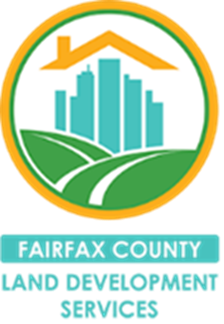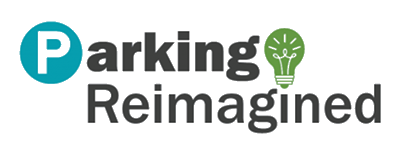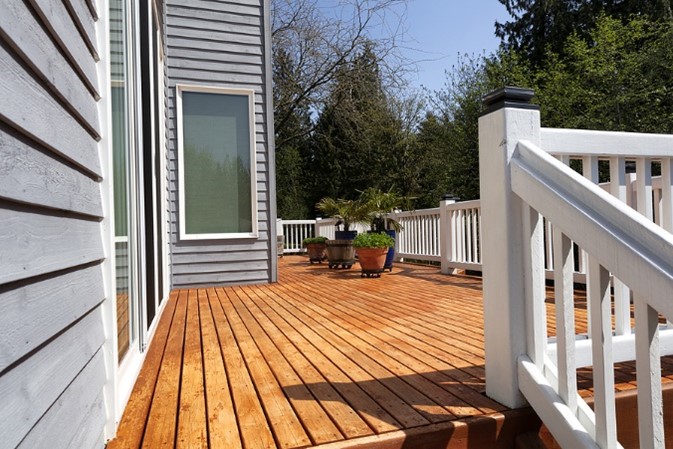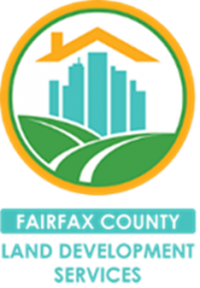Land Development Services Alert:
Land Development Services (LDS) recently launched a new Proffer/Development Condition module in the Planning and Land Use System (PLUS). Proffers and development conditions are additional requirements to mitigate the impacts of an application (e.g., a development condition for a turn lane or traffic signal necessary to mitigate the impacts of the traffic pattern generated by that development). Proffers and development conditions are established during the Board of Supervisors rezoning approval process and other types of entitlement cases processed by the Department of Planning and Development (DPD). Many proffers and development conditions must be addressed prior to or at the time of certain construction milestones. LDS verifies and confirms compliance of any proffers that affect site or building plans and permits issued by LDS.
The Proffer/Development Condition module in PLUS will help support tracking proffers and development conditions approved on entitlement cases, and significantly, will readily relate those conditions to associated site and building records. This system will ensure that applicable proffers and development conditions are flagged at key milestones and appropriately monitored and enforced by staff, furthering our goal of managing all development related activities in one comprehensive system.
While the Proffer/Development Condition module is now visible to customers in PLUS, it is in a beta testing mode. Specific entitlement cases will be piloting the module, in close coordination with staff from LDS and the DPD. We expect to open up the Proffer/Development Condition module to all new entitlement cases in the coming months. Until then, unless you’ve been contacted by staff for participation in the pilot, please continue to follow the proffer compliance process outlined here: https://www.fairfaxcounty.gov/landdevelopment/proffer-compliance. Once the beta testing mode is complete and a date has been confirmed for the full release of the Proffer/Development Condition module, additional updates and information will be provided.
 Fairfax County Government offices, including Land Development Services (LDS), will be closed after noon on Friday, Dec. 22. Offices will also be closed all day on Monday, Dec. 25, 2023, and Monday, Jan. 1, 2024.
Fairfax County Government offices, including Land Development Services (LDS), will be closed after noon on Friday, Dec. 22. Offices will also be closed all day on Monday, Dec. 25, 2023, and Monday, Jan. 1, 2024.
LDS Customer Information Center and Customer Experience Team counters will be closed all day on Friday, Dec. 22. However, staff will be available from 9:15 a.m. to noon to respond to questions via phone or email on Friday, Dec. 22.
The Planning and Land Use System (PLUS) will remain accessible to customers throughout the closure, but staff will not be available to respond to questions in person or via phone or email.
Happy Holidays from all of us at Land Development Services! We look forward to working with you in the new year!

 Effective Dec. 29, 2023, LDSNET, a legacy land development system, will no longer be available for use. Customers may access land development records through PLUS (the Planning and Land Use System). PLUS serves as Fairfax County’s central platform for customers to complete building, zoning, permitting and other land development processes. If you are unable to find a land development record in PLUS, you will be able to locate your record at the Land Development Information History webpage.
Effective Dec. 29, 2023, LDSNET, a legacy land development system, will no longer be available for use. Customers may access land development records through PLUS (the Planning and Land Use System). PLUS serves as Fairfax County’s central platform for customers to complete building, zoning, permitting and other land development processes. If you are unable to find a land development record in PLUS, you will be able to locate your record at the Land Development Information History webpage.
Find important information and instructions for Land Development Service (LDS)-related records on the Permit Library | Land Development Services (fairfaxcounty.gov) page.
Visit the PLUS webpage for additional information about PLUS.
County staff continue to implement additional improvements to the Planning and Land Use System (PLUS) to serve you better. Check out these new PLUS fixes for Land Development Services (LDS) customers.
PLUS Enhancement |
LDS Customer Benefit |
Updates to Building |
|
|
Update plan room logic for commercial building records for new commercial building (BLDC), commercial alteration (ALTC), and commercial miscellaneous (MISCC) record types. |
The plan room was adjusted to no longer require plans/documents if there is a related parent or Masterfile record. |
|
Correct an address issue with the Cross Connections report. |
The property address is now being properly displayed on the Cross Connections report. |
|
Correct an address issue with the Statement of Special Inspections (SSI) form. |
The owner section of the SSI form was updated to reflect the correct owner’s address. |
|
Update the residential certificate of occupancy. |
The certificate of occupancy was updated to include code required fields and to include the Zoning Administrator’s signature. |
|
Update building inspections email notifications. |
Building inspections emails have been modified to better reflect the inspections process and next steps for applicants. |
Updates to Site |
|
|
Update floodplain notice of violation produced from complaint records. |
Updated report provides a clear and concise notice for customers and staff. |
|
Remove work location map from records page and replace with address. |
Remove the work location map and replaced it with an address to provide a cleaner looking screen for customers and prevent delays with loading content. |
|
New question for subdivision grading plan (SDGP) and site plan grading plan (SPGP) revision records. |
There is now a question during the application process asking whether the revision being submitted has been confirmed to qualify for a minor revision. If so, it will then correctly assess the $108 review fee instead of a $432 fee. |
|
Update plan room disciplines to indicate minor addition for resource protection area waiver (WRPA) review. |
Customers have a clearer picture of the correct agency/department providing a review comment. |
 We welcome your feedback on future PLUS enhancements. If you have ideas to improve the system, please take a moment to enter them here: LDS Customer PLUS Feedback Form.
We welcome your feedback on future PLUS enhancements. If you have ideas to improve the system, please take a moment to enter them here: LDS Customer PLUS Feedback Form.
 On Sept. 26, 2023, the Fairfax County Board of Supervisors repealed and replaced Article 6 of the Fairfax County Zoning Ordinance. Article 6 contains the off-street parking and loading regulations for land development in the county. A copy of the approved amendment is available for review on the Parking Reimagined webpage prior to its effective date of Jan. 1, 2024, at which time it will be incorporated into the Zoning Ordinance.
On Sept. 26, 2023, the Fairfax County Board of Supervisors repealed and replaced Article 6 of the Fairfax County Zoning Ordinance. Article 6 contains the off-street parking and loading regulations for land development in the county. A copy of the approved amendment is available for review on the Parking Reimagined webpage prior to its effective date of Jan. 1, 2024, at which time it will be incorporated into the Zoning Ordinance.
The new ordinance was adopted following a two-year study of Fairfax County’s parking regulations with the goal of updating and modernizing these requirements to incorporate current and future parking trends.
Significant regulatory changes include new requirements for minimum bicycle parking; adjustments to parking rates for many land uses; a graduated tiered parking framework with lower minimum requirements in planned high-density development areas of the county; restructured loading requirements; additional options and criteria for parking reductions, now known as adjustments; and administrative changes intended to create more simplicity, flexibility and predictability in determining site and use parking needs. Additional training material will be posted on the LDS Off-Street Parking webpage.
If you have any questions, please contact Michael Davis, Parking Program Manager, in the Site Development and Inspection Division at 703-324-3065, TTY 711
 Staff from the Department of Land Development Services (LDS) and the Department of Planning and Development (DPD) conducted a 90-day pilot program beginning in August to test a process change that would reduce the review period for residential deck permits from about ten days to three-business days. The pilot project was successful, and the new process has been implemented as a permanent change; comprehensive residential deck reviews are now completed within three-business days. LDS and DPD staff have been able to review applications associated with residential deck permits within three-business days of completed application submission. This includes first submission applications as well as resubmissions. This change will streamline the permitting process for the over 2,000 residential deck permits that are issued on average each year.
Staff from the Department of Land Development Services (LDS) and the Department of Planning and Development (DPD) conducted a 90-day pilot program beginning in August to test a process change that would reduce the review period for residential deck permits from about ten days to three-business days. The pilot project was successful, and the new process has been implemented as a permanent change; comprehensive residential deck reviews are now completed within three-business days. LDS and DPD staff have been able to review applications associated with residential deck permits within three-business days of completed application submission. This includes first submission applications as well as resubmissions. This change will streamline the permitting process for the over 2,000 residential deck permits that are issued on average each year.
This does not include deck projects proposing encroachment into the Resource Protection Area (RPA) and/or the floodplain as those require separate, and more technical, site review. For more information on floodplain and RPA submission requirements, visit our Plan Ahead page.
Current review times for non-residential deck permits and other project types can be found at Land Development Metrics.
For more information about residential deck projects please visit the LDS Permit Library or call 703-222-0801.
To better assist customers with site-related plan and document submissions in Fairfax County’s Planning and Land Use System (PLUS), Land Development Services (LDS) created the Site-Related Submission Guidelines webpage. The webpage is also referenced on each site record page in the new LDS Permit Library.
Submitters are strongly encouraged to adhere to these best practices when uploading plans and documents to the PLUS digital plan room. These practices promote customer ease-of-use and help facilitate the efficient acceptance and review of site-related plans.
For questions or additional information, please contact the Site Application Center staff via email or telephone at 703-222-0801, TTY 711.
 County staff continue to implement additional improvements to the Planning and Land Use System (PLUS) to serve you better. Check out these new PLUS fixes for Land Development Services (LDS) customers.
County staff continue to implement additional improvements to the Planning and Land Use System (PLUS) to serve you better. Check out these new PLUS fixes for Land Development Services (LDS) customers.
|
PLUS Enhancement
|
LDS Customer Benefit
|
|
Updates to Building |
|
|
Updated the building permit card for commercial records. |
Tenant names are now printed as intended in the appropriate field on building permit cards. |
|
Adjusted Elevator Maintenance records so customers can apply before passing the acceptance inspection. |
Contractors can now apply for an Elevator Maintenance record before completion of the acceptance inspection on the Elevator Installation records. |
|
Created a new record level status “Refund Request Pending.” |
Customers can see their requested refund is being processed when checking their record status. |
|
Updated elevator invoices. |
Customers can clearly identify who to contact for elevator accounts receivable on elevator invoices. |
|
Updated elevator invoices, late notices and final reports. |
Elevator invoices, late notices and final reports are now easier to understand because they group inspection fees based on inspection date and list chronologically from oldest to newest to create more clarity. |
|
Updated “Owner as Contractor” question in every building record. |
Customers can better understand the “owner as contractor” question in building record applications. |
|
Updates to Site |
|
|
Updated the LDS/Inspection Checklist Report. |
Customers have clear and easy to read reports for Site Inspections. The report outlines the details of the deficiencies from the inspection, if any, and the corrective action required. |
|
Updated the Erosion and Sediment Control (E&S) Stop Work Order report. |
Customers have easy to read reports clearly outlining all deficiencies from the inspection and what the necessary corrective actions are. |
|
Updated the Non-Designated Plan Examiner (Non-DPE) workflow. |
Customer non-DPE plans now follow the updated workflow when corrections have been received by staff. |
We welcome your feedback on future PLUS enhancements. If you have ideas to improve the system, please take a moment to enter them here: LDS Customer PLUS Feedback Form.
The Land Development Services Site Development and Inspections Division has updated the Erosion and Sediment Control (E&S) Checklist. The checklist contents have been re-organized and simplified, and outdated code references and contents have been updated.
All E&S plans submitted for approval must include an E&S checklist. The hyperlinked checklist is available under the “Requirements section of all relevant site record guides found in the LDS Permit Library. (Learn more about the Permit Library.) The new checklist may be used immediately and is required for all initial submissions made on or after November 10, 2023.
A copy of the updated checklist has been posted on the website.
If you have any questions, please contact the Site Development and Inspections Division at 703-324-1720, TTY 711.

All plat submissions, including Easement Plats and Record Plats, must clearly identify public easements. This new requirement is effective immediately and is necessitated by a recent court decision regarding Virginia Code Sec. 15.2-2265.
All plats with proposed easements must bear a note saying, “See the accompanying deed to this plat for information on use, ownership, maintenance and conditions of easements shown”.
If you have any questions, please contact Matthew Hansen or call Land Development Services at 703-324-1752, TTY 711.